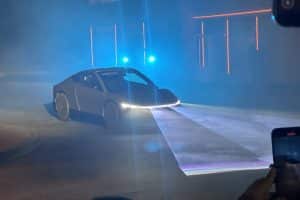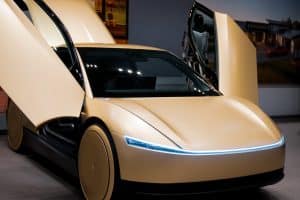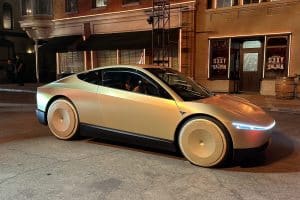- 🚗 Tesla’s new $25K Cybercab will have no steering wheels or pedals, focusing on a fully autonomous future.
- 🤖 Elon Musk emphasizes that creating a traditional $25K car with manual controls would contradict Tesla’s core belief in autonomy.
- ⚙️ The Cybercab is a realization of Tesla’s vision for cost efficiency and reduced cost per mile in autonomous vehicles.
- 📈 The Q3 2024 earnings call clarified that the Cybercab is the sole version, dispelling previous beliefs of a manual option.
- 🚚 Tesla continues to support traditional vehicles through other models like Model Y and Model 3, while redefining the industry with new technologies.
In a bold step towards an autonomous future, Tesla has unveiled its revolutionary $25,000 Cybercab, designed without the traditional steering wheels or pedals. This move not only aligns with Tesla’s vision of efficient and autonomous transportation but also challenges industry norms about what a budget-friendly vehicle can offer.
Understanding the New Cybercab
The Autonomous Vision
At the core of Tesla’s announcement is a firm belief in an autonomous world. Elon Musk has been clear that Tesla aims to innovate beyond manual controls, rendering a conventional $25,000 car obsolete. By removing steering wheels and pedals, Tesla’s Cybercab paves the way for what could become the standard in future transportation.
Cost Efficiency and Reducing Per-Mile Expenses
A significant aspect of the Cybercab’s design is its focus on reducing the cost per mile. Tesla acknowledges that the economic efficiency of vehicles will drive their success in a world pointed towards autonomy. The Cybercab promises to deliver on this efficiency promise by optimizing design and function for autonomous operations.
Key Features of the Cybercab
- No Steering Wheels or Pedals: The Cybercab forgoes traditional driving mechanisms, reinforcing its autonomous nature.
- Affordability: At an expected price of $25,000, it challenges preconceived notions regarding the cost of advanced technology.
- Eco-friendly Focus: Designed to be energy-efficient, it aims to minimize operational costs without compromising on performance.
The Cybercab vs. Model 3: What’s Different?
For potential Tesla buyers, understanding the divergence between the Cybercab and more traditional models like the Model 3 is crucial:
- Autonomy: While the Model 3 offers semi-autonomous features, the Cybercab is fully autonomous, with no option for manual control.
- Target Market: The Model 3 caters to those seeking a traditional driving experience with cutting-edge tech, while the Cybercab targets customers open to completely AI-driven commutes.
- Price and Accessibility: Both models are priced to be accessible, but the Cybercab’s focus on affordability without manual controls indicates a new market demographic Tesla aims to reach.
Elasticities in Tesla’s Lineup
Despite the futuristic direction with the Cybercab, traditional Tesla models like the Model Y and Model 3 remain on the docket for customers who appreciate conventional driving experiences. This dual approach allows Tesla to cater to varying consumer preferences while securing a foothold in the emerging autonomous vehicle market.
Conclusion: The Future of Autonomous Vehicles at Tesla
Tesla’s Cybercab is more than just a new car—it’s a statement about the future of transportation. By pushing the boundaries of what’s possible with a $25K vehicle, Tesla invites consumers to reconsider their expectations of affordability and technology in cars. This move underscores their commitment to innovation and positions Tesla as a pioneer in the transition to an autonomous transportation system.





